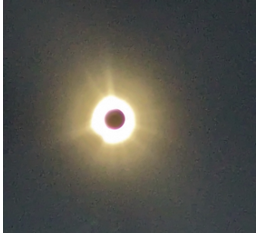On Monday, April 8, 2024, the moon cast its shadow on the Earth, creating a partial solar eclipse visible right here in Acton. From classrooms to parks, residents across town took a moment to gaze skyward and witness this celestial spectacle.
This story captures the Acton experience, from the meticulous planning of local organizations to the wonder on the faces of children and adults alike. We’ll journey through photos and interviews, showcasing the ingenuity, curiosity, and community spirit that makes Acton special.
So, grab your metaphorical eclipse glasses, and let’s explore how Acton embraced this astronomical event!
Let’s start at R.J. Grey Junior High School, where more students turned up for a special after-school event to see the eclipse than had signed up ahead of time. They were firmly told, “Don’t look directly at the sun this afternoon – or ever – without wearing eclipse glasses.”
Just before this happened, I interviewed Anastasia Koulopoulos, a 7th grade science teacher at R.J. Grey, about the lessons she and other teachers who had organized the event wanted their students to learn.
Jarboe: How did you or your school incorporate today’s eclipse into your science curriculum?
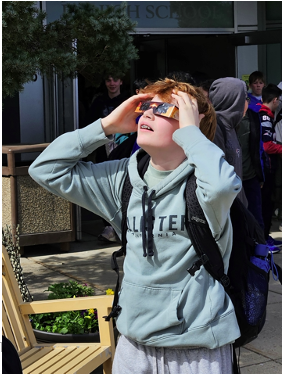
Koulopoulos: “Discussing the earth, Moon, and Sun System is a part of the 7th grade curriculum. This includes discussing where the sun, moon and Earth are in space (and in relation to one another) and how that affects what we see and experience on Earth. We specifically spent a few days discussing eclipses and viewing models in class leading up to the total solar eclipse.”
Jarboe: How does the moon’s orbit around Earth and Earth’s orbit around the sun create the conditions for a total eclipse?
Koulopoulos: “At the same time that the moon is orbiting around the Earth, the Earth is orbiting around the Sun. The path that the moon takes around the Earth is NOT on the same plane as the Earth’s orbit around the Sun. The Earth orbits the Sun on the plane of the ecliptic, and the moon’s orbit is tilted 5° off of the plane of the ecliptic. This means it is rare for all three objects (the moon, sun, and Earth) to line up in a straight line and be on the same plane for a short amount of time since the Earth, sun, and moon are always in motion.
“Here is the image I created to use as a visual while explaining this to my students.”
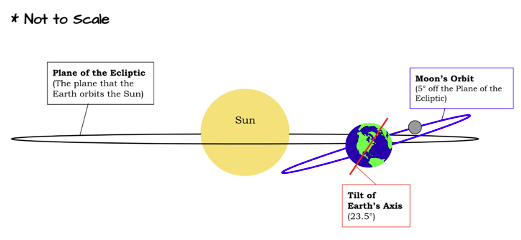
Jarboe: What are some engaging activities or demonstrations you use to teach students about eclipses?
Koulopoulos: “My favorite model we do with students requires a light source (I use an overhead projector), a foam ball and the student! The light source represents the sun, the foam ball represents the moon, and the student represents the Earth. They hold the ball in front of them and go through a full lunar cycle. This is done as the student makes one complete rotation with the foam ball in front of them, they can view all of the phases of the moon as the foam ball (moon) moves position around the student (Earth).
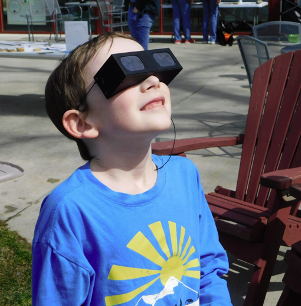
“During this, they experience where the sun, moon and Earth are located in relation to one another when we experience solar and lunar eclipses. They are also able to model the difference between when the moon’s orbit crosses onto the plane of the ecliptic, and when the moon’s orbit is tilted 5° off the plane of the ecliptic.”
To get another local perspective for this global story, I interviewed Paul Fenton, Director of Environmental and Outdoor Education at the Acton Discovery Museum.
Jarboe: Does the Acton Discovery Museum have any special exhibits or programs related to eclipses?
Fenton: “We decided to host a program for the total eclipse on Monday, April 8. We’re normally closed on Mondays during the school year, but we decided to offer an outdoor, free, and open-to-the-public experience to enjoy the eclipse and some space and moon related activities.”
Jarboe: Can you tell me a bit about the museum’s approach to educating visitors about eclipses?
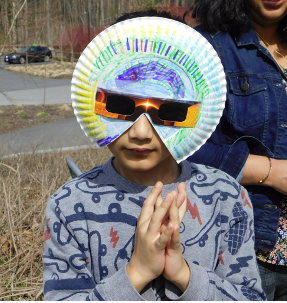
Fenton: “A big part of our educational philosophy is to provide children and caregivers direct access to science phenomena. This has been our approach in designing the experience for our community today: our main objective is to provide tools to be able to observe the eclipse. We’ll have eclipse glasses, and we’ll make pinhole cameras. We hope we set the stage for visitors to enjoy this fascinating astronomical phenomenon.”
Jarboe: How far back does the study of eclipses go in human history?
Fenton: “I would say that it goes back to the very beginning of humans. We know that eclipses play a part in stories from cultures all over the world. It’s hard to say exactly when humans began to understand the true cause of eclipses, but evidence points to it being before the year 0, possibly in the 1-2,000 BCE range in different parts of the world. Systems for predicting eclipses are common in ancient cultures worldwide.”
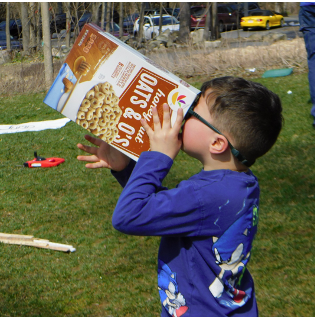
Jarboe: While we can’t see the totality here, can you tell me a bit about the science behind a total eclipse?
Fenton: “A total solar eclipse happens because of the serendipitous geometry of the sun/earth/moon system. These bodies are all moving about one another but when they align just right, the moon moves into a position that covers the sun almost precisely. Essentially, when you are in the path of totality (or even close to it) you’re standing in the shadow cast by the moon.”
Around town, adults and children gathered in backyards and any open space for organized and spontaneous eclipse watches.
Alissa Nicol took these photos at NARA Park. The first shows the large crowd of Acton residents who attended the eclipse viewing party hosted by the Acton Recreation Department.
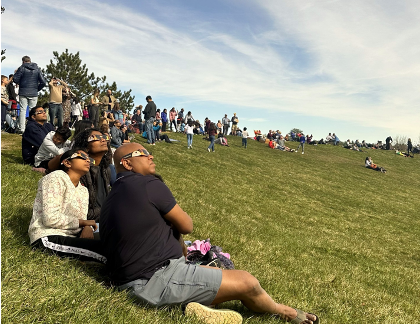
Nicol said the French Bulldogs in her second photo are named Moon (left) and Blue (right).
Bob Van Meter took this photo of the gathering at Half Moon Hill to view the eclipse.
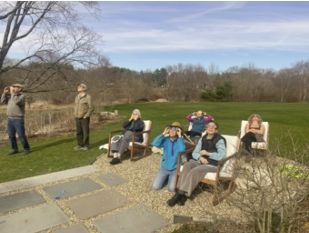

In that same neighborhood, output from the newly installed solar carports decreased as the moon blocked the sun. Dan Groher captured the dip in a graph of the output.
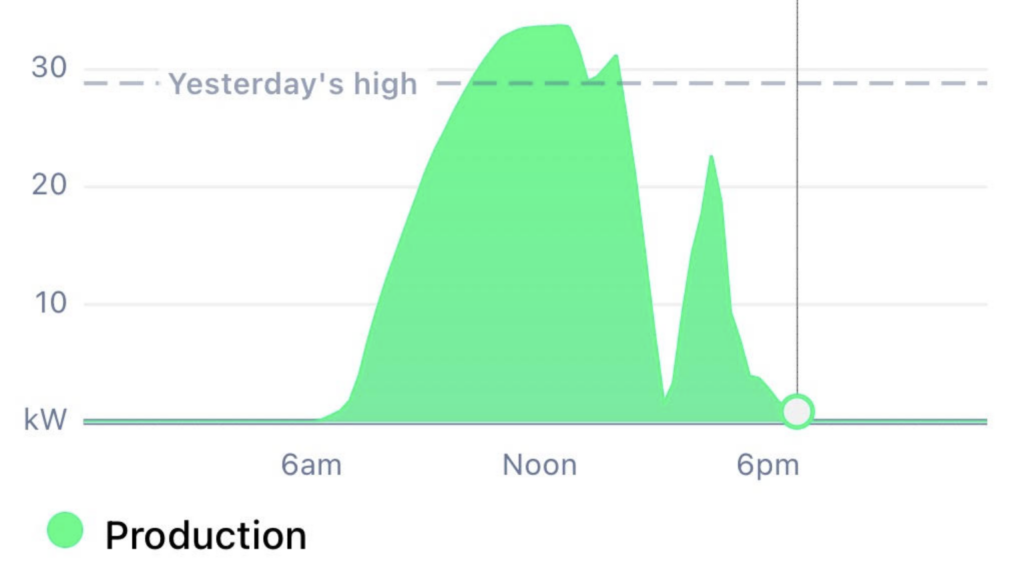
Nancy Hunton took a photo I took outside the Acton Memorial Library during the eclipse. It’s of Robert Carter, head of children’s services at the library, and his Newtonian reflecting telescope.
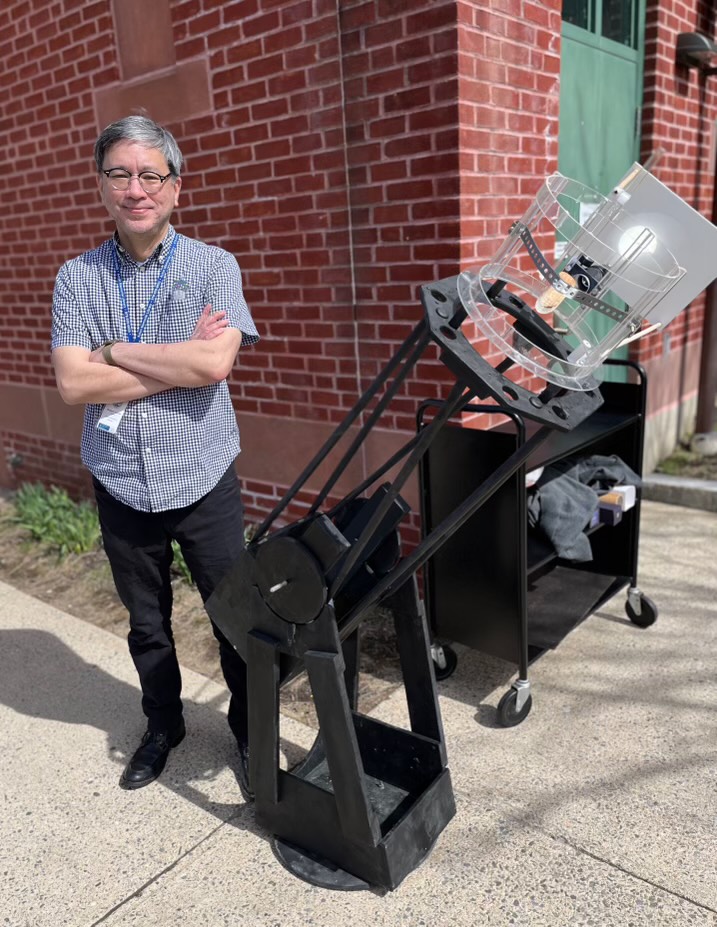
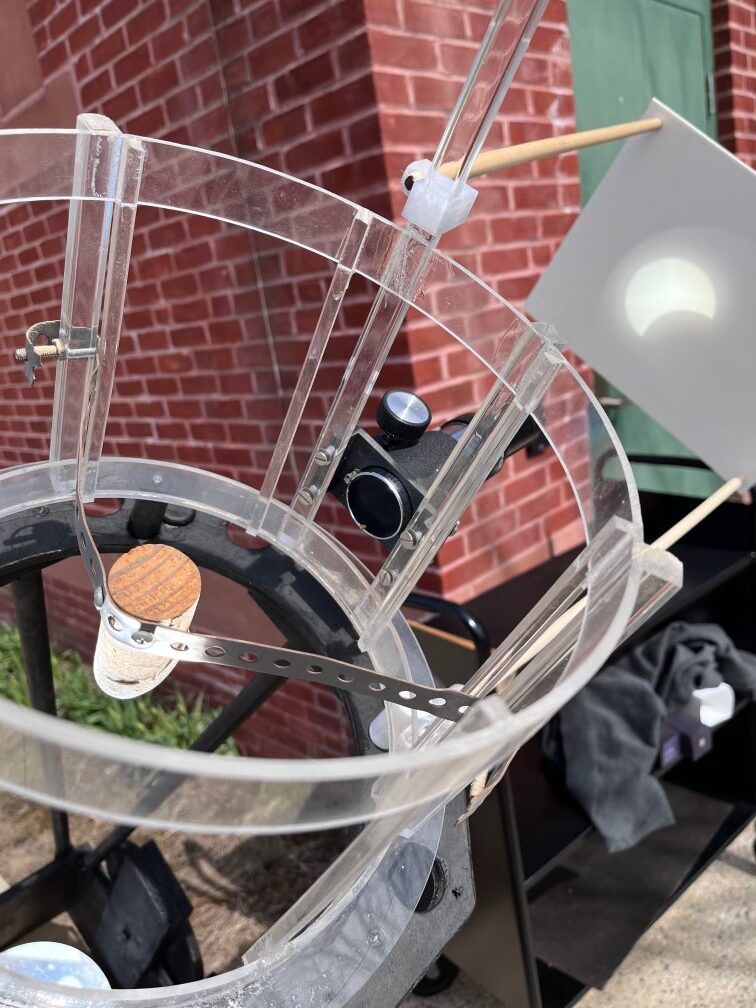
Carter’s Newtonian reflecting telescope projected an image of the eclipse onto a screen on the side. He said the library gave out 500 pairs of eclipse glasses before they ran out. Photo: Nancy Hunton
Meanwhile in West Acton, The Silver Unicorn Bookstore had stocked up with quite a few books related to the eclipse. They sold out of their copies of Magical and Unusual Solar Eclipse, written by Silvia Piccinotti of Acton and illustrated by Rong Pham. It was perfect for families and classrooms preparing to see a solar eclipse as well as parents of young or sensitive children looking for a sweet read-aloud story.
In addition to viewing the eclipse in town, several Acton residents traveled to the zone of totality. Franny Osman went to Morristown, Vermont, with her husband’s solar telescope and glasses. She said a fellow eclipse observer created this paper model to try to understand what was happening.
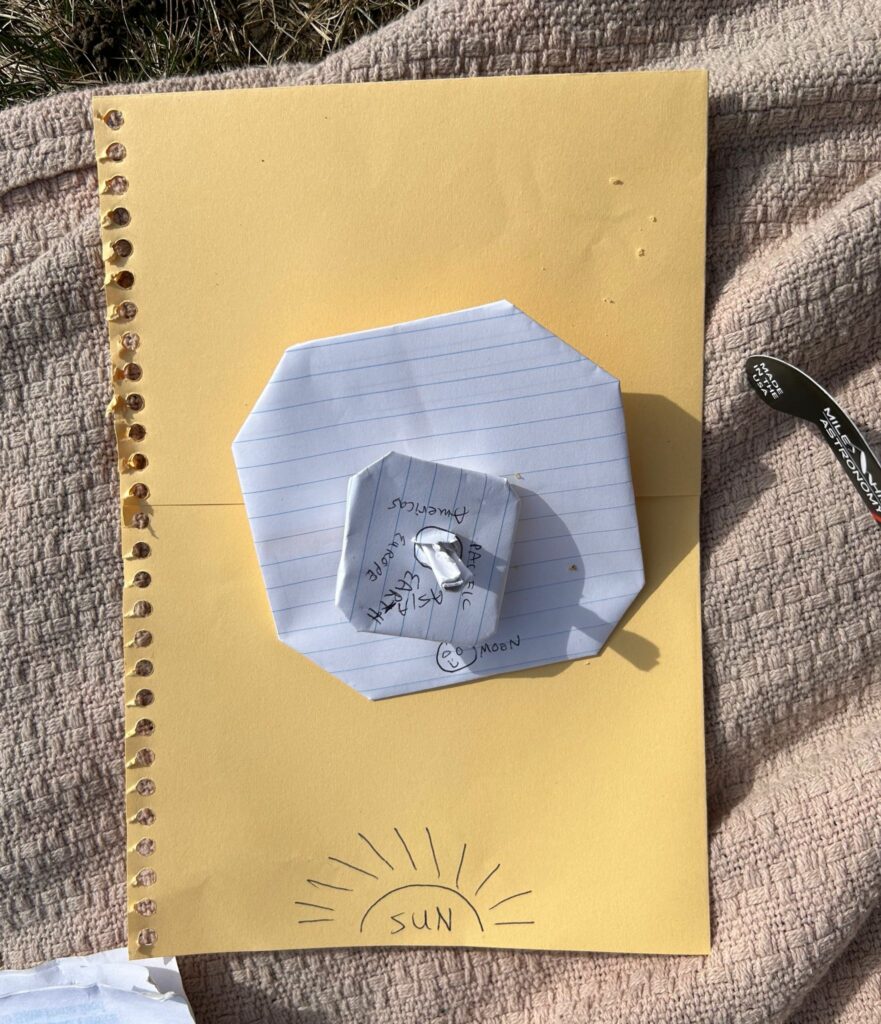
Bob Ferrara experienced totality on the banks of the Carrabassett River in Kingfield, Maine, on a perfectly cloudless day.
Dana and Jim Snyder-Grant saw the eclipse in Errol, New Hampshire. They had reserved a room in an inn months earlier. Jim wrote, “The astonishing part for me was taking off the glasses at totality and seeing this strange thing in the sky, a dark disk with a glowing ring around it.”
If you missed the eclipse, New England residents will next get to experience a total eclipse on May 1, 2079. The next total solar eclipse visible from the Lower 48 United States is on August 22, 2044. In just two years, on August 12, 2026, a total eclipse will pass over parts of Spain, Greenland, and Iceland.
Greg Jarboe is a current volunteer reporter for the Acton Exchange, a former editor of the Acton Minuteman, and a former chair of the Acton Select Board. Portions of this article were crowd-sourced via an invitation to the AE Writers’ email list.

